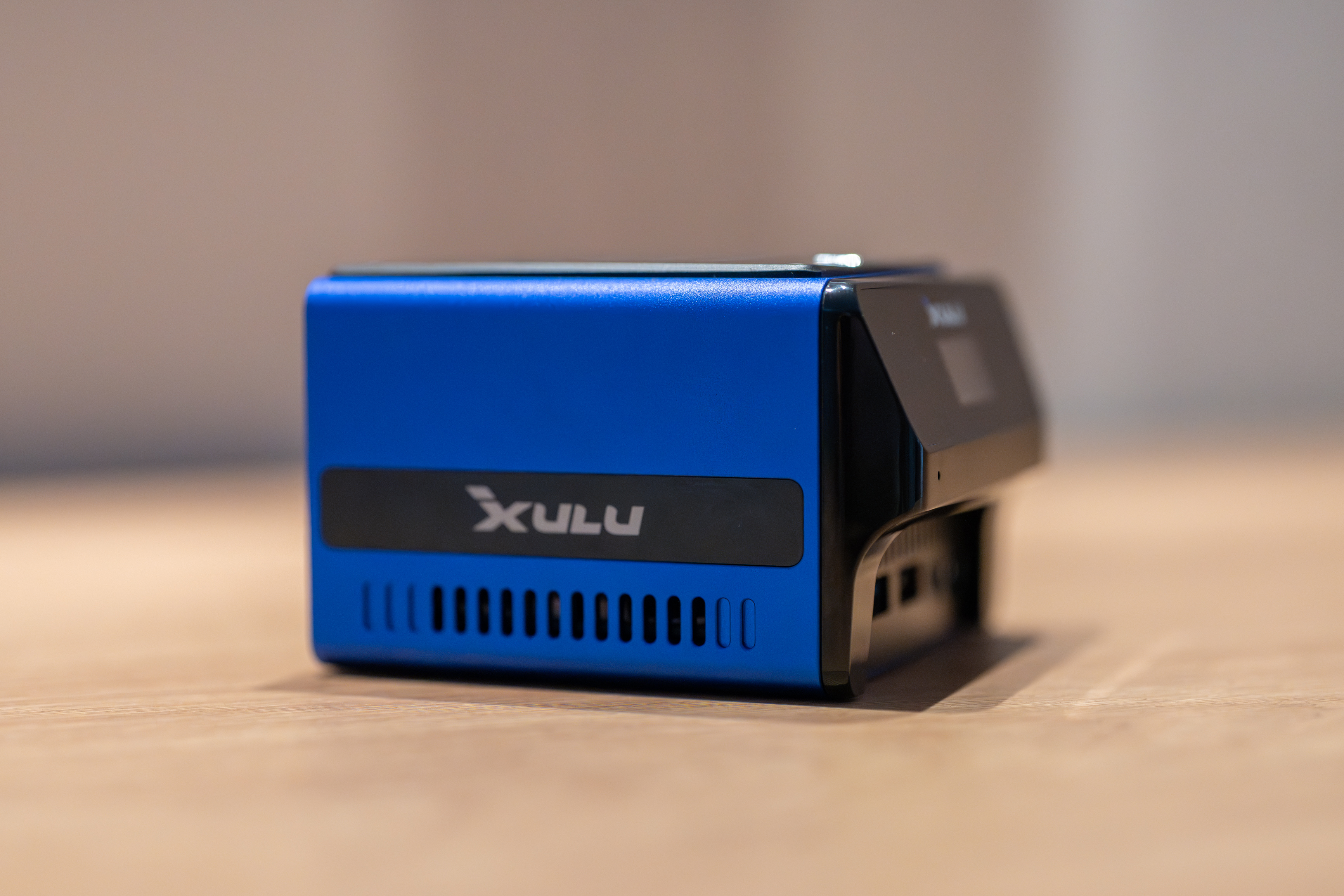Our Verdict
The Xulu XR1 Max is a Kickstartered mini PC that offers a very reasonable power level in a teeny-tiny case. What it lacks in expandability it makes up for in capability, with the AMD APU good enough for image or video editing. What’s more, you can take it apart to upgrade the RAM and storage should the need arise. It’s a good all-in-one package, an all-rounder that will fly through office tasks, can turn its hand to serious creative work, and even manage a bit of light gaming.
For
- Small
- Runs cool
- Good connectivity
Against
- Not the most powerful CPU
- Fiddly to reassemble
Why you can trust Creative Bloq
You see mini PCs all over Amazon and other online tech retailers. They’re usually underpowered, offering the ability to do little other than display a desktop and run a web browser. This tiny desktop PC, however, comes from a Kickstarter campaign by a Hong Kong firm, and it caught our eye by cramming a very decent amount of computing power into a diminutive metal case. It might be an ideal little Photoshop machine.
The Xulu XR1 Max contains a Ryzen 7 processor that’s plenty fast enough for today’s creative apps, and can be specced with up to 64GB of RAM and a 2TB NVMe SSD. There are two 4K HDMI ports, gigabit Ethernet, seven USB ports including a single Type-C, and using this socket’s DisplayPort function means it can connect to three monitors at once. It’s upgradeable too, though this is a fiddly process and not something you’re going to want to do often.
The XR1 Max is designed to replace a desktop tower, and while it loses all the expansion capability of such a large case, that hasn’t stopped the Mac mini or other small form-factor builds from achieving their aims. I've enjoyed my time with this tiny PC, and am starting to reassess the necessity of the ATX tower under the desk. But is it good enough to slug it out among the best computers for graphic design? Let's find out.
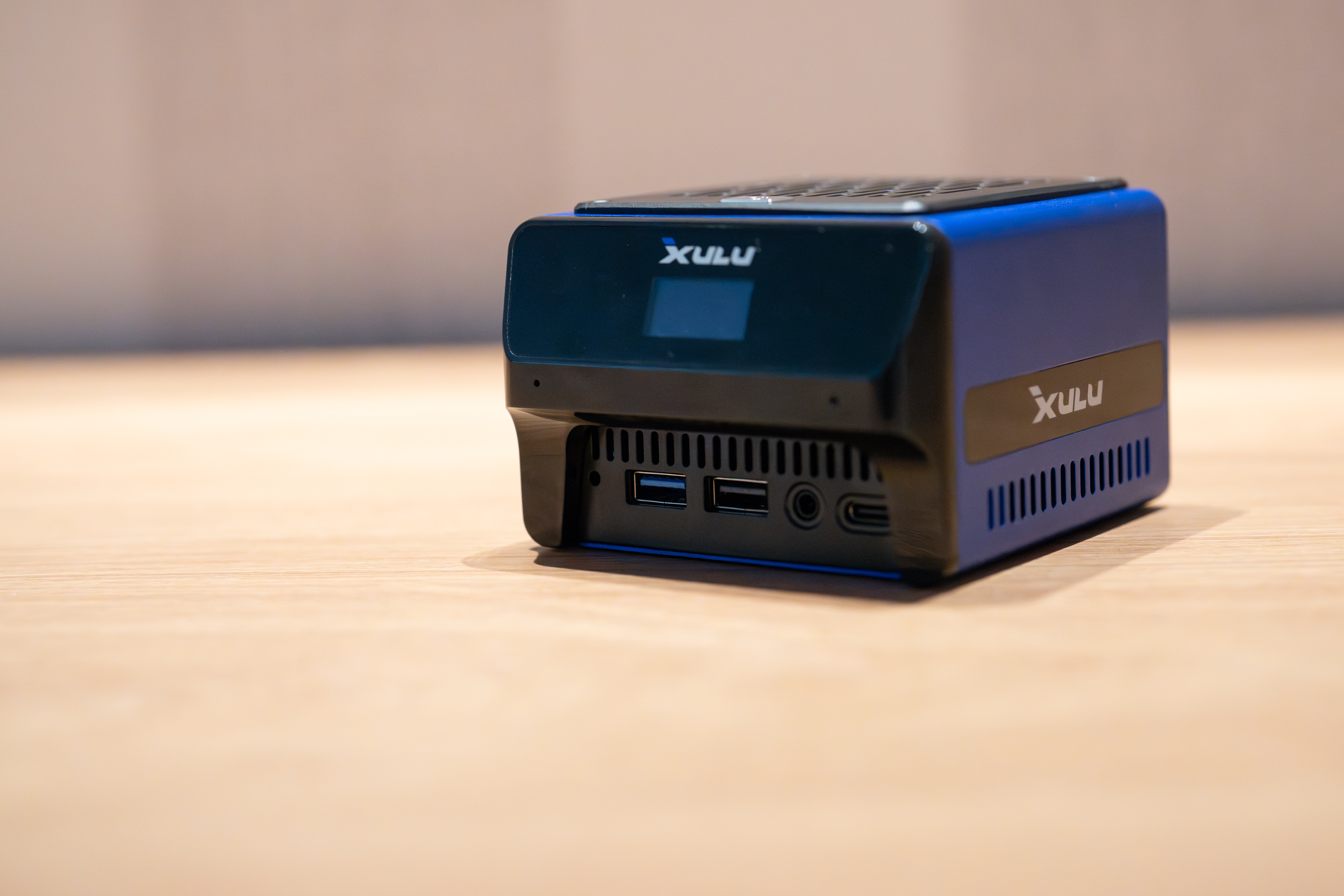
Xulu XR1 Max review: Key specs
| APU: | AMD Ryzen 7 5800U with Radeon Graphics |
| RAM: | 32GB |
| Storage: | 1TB SSD |
| Connectivity: | 3x USB 2.0, 3x USB 3.1 Type-A, 1x USB 3.2 Type-C/DisplayPort, 2x HDMI 2.1, Ethernet, Wi-Fi 6E, Bluetooth 5.2. |
| Dimensions: | 63.5 x 89 x 96.5mm |
Design and build
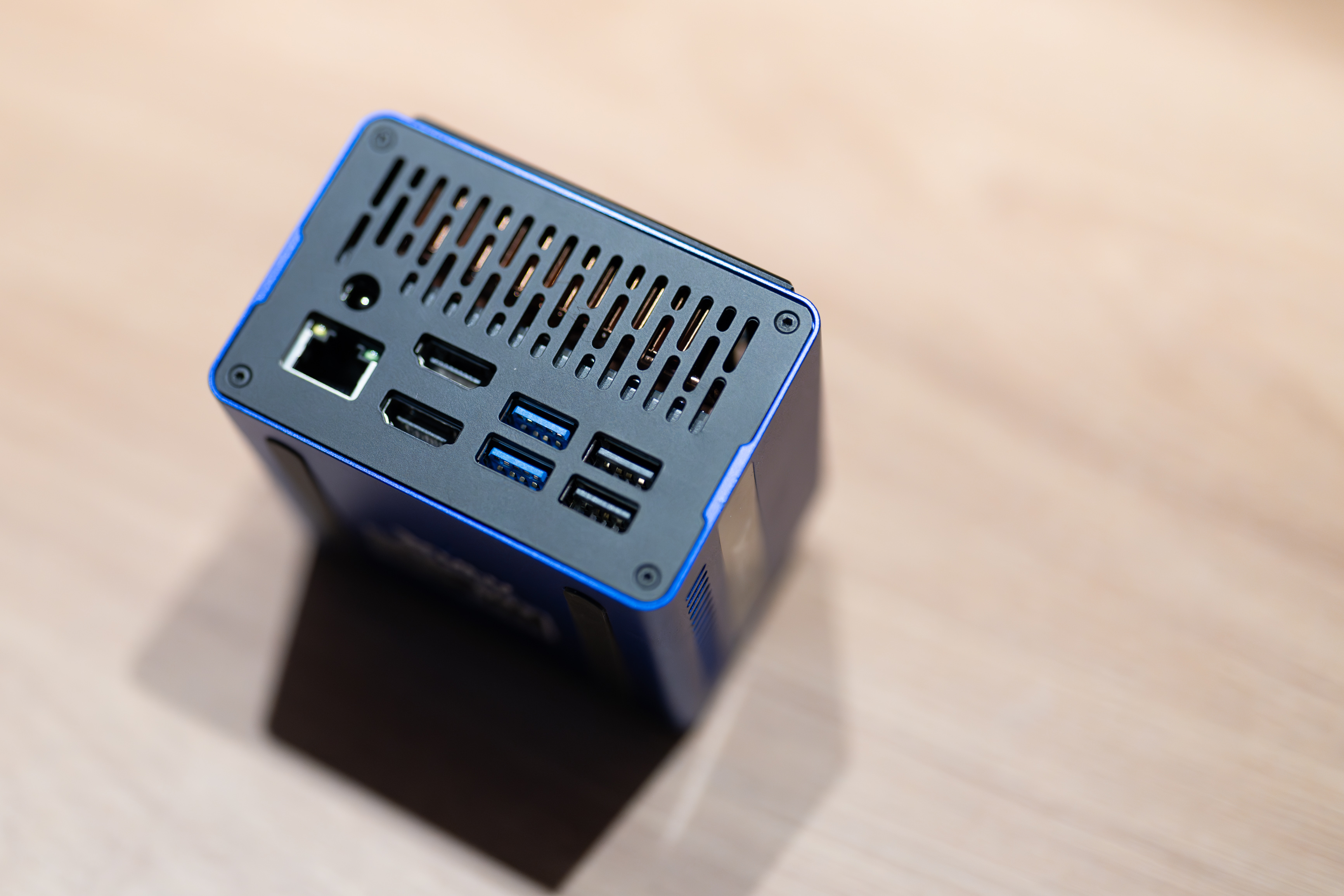
Smaller (but taller) than a Mac mini and housed in a metal case that comes in multiple colours (ours is a fetching blue, but we like the look of the orange case too), the Xulu XR1 really won’t take up much space on your desk. This tiny footprint – it’s an awkward size to describe, being smaller than a DSLR body, about the size of a couple of packs of playing cards, or an alarm clock, or a really big Raspberry Pi case – belies its processing power. There are some serious laptop-grade components inside, enough to push creative software and even do a bit of gaming.
Undo a few screws and the sandwich of circuit boards slides out from the casing. It’s densely packed, with the CPU cooling fan on top. Four ribbon cables connect this to the board below, which houses the RAM and, once you remove it completely, you can access the SSD. In this way, both memory and storage can be replaced by the user. Doing the ribbon cables back up again is the worst part, as space inside the chassis is limited and the cables necessarily short, but with a pair of tweezers to click the cable sockets back in place again, it’s all perfectly possible.
The build quality is very solid, the switch on top depresses with a satisfying click to switch the unit on, and there's an info display on the front that displays the time, CPU temperature, and fan speed. There are two USB Type-A ports on the front, along with a headphone socket, dual microphones and USB Type-C, plus a reset button you’ll need a pin or SIM tool to press. It’s all very nicely thought out, with enough USB ports on the back (plus the HDMI ports, Ethernet and power brick connection) to connect to a lot of things without needing a hub. We slightly question the sole USB-C port being on the front, as it doubles as a third monitor output and leads to some uncomfortable cable positioning if used as such, but we can see why it’s been done this way – the convenience of having it there outweighs the potential ugly cable placement.
Features
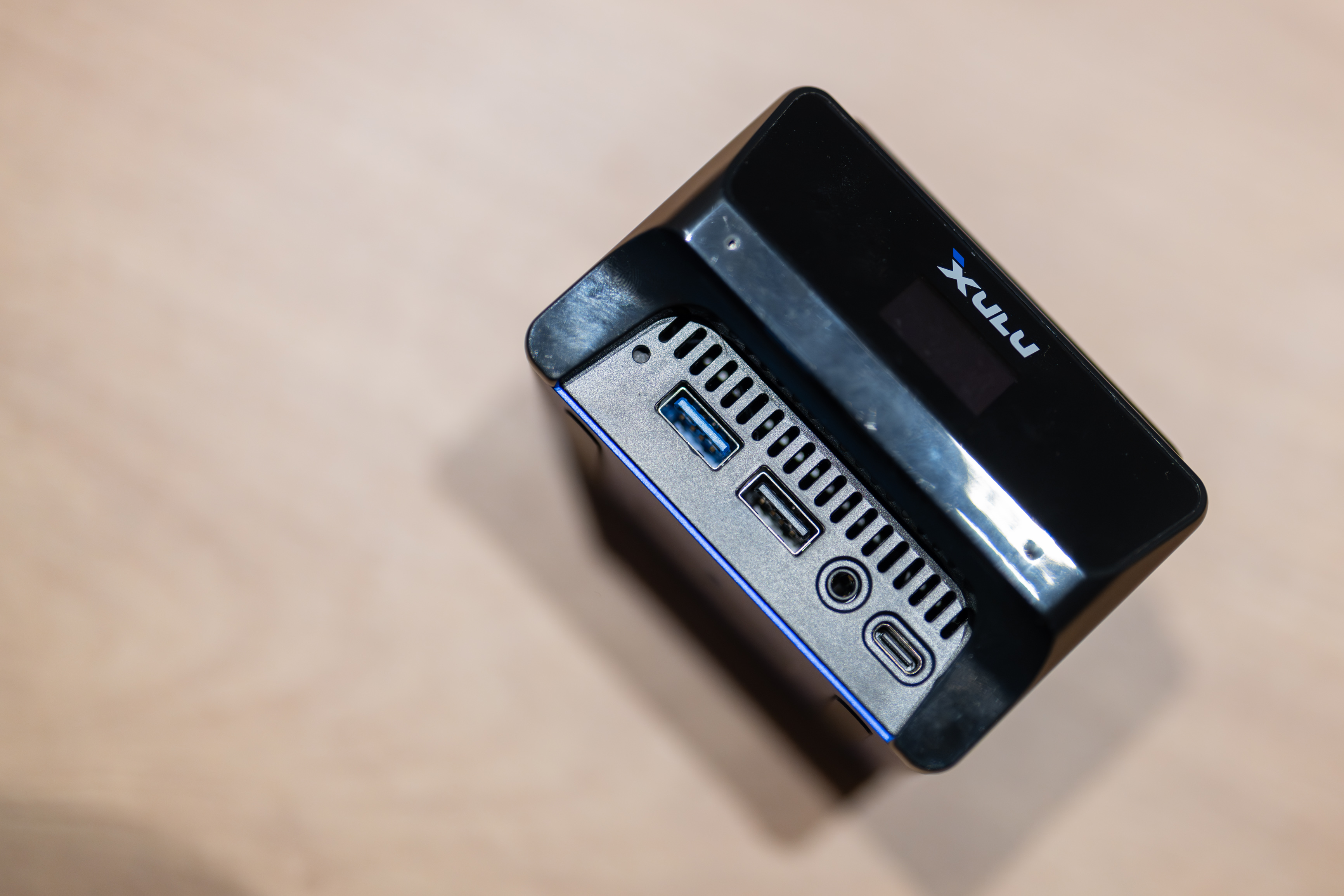
Given the size of the case, Xulu has managed to squeeze a lot of ports in. There are seven USB ports in total, three of them of the 2.0 variety most useful for keyboards, mice, slow USB sticks and the like. There are three 10Gbps USB 3 Type-A ports, and that lone Type-C that doubles as a DisplayPort. Combined with the Bluetooth 5.2 and Wi-Fi 6E it’s a fine selection, and it’s nice to see a 3.5mm headphone socket too, something that appears to be an endangered species. There's a gigabit Ethernet port around the back too.
So you get a lot of connectivity. An SD card reader might have been nice, but with that many USB ports you can probably find one to connect a card reader. Having the fastest flavour of USB 3 on board means fast external storage can be connected if you’re working with large video files,
Performance
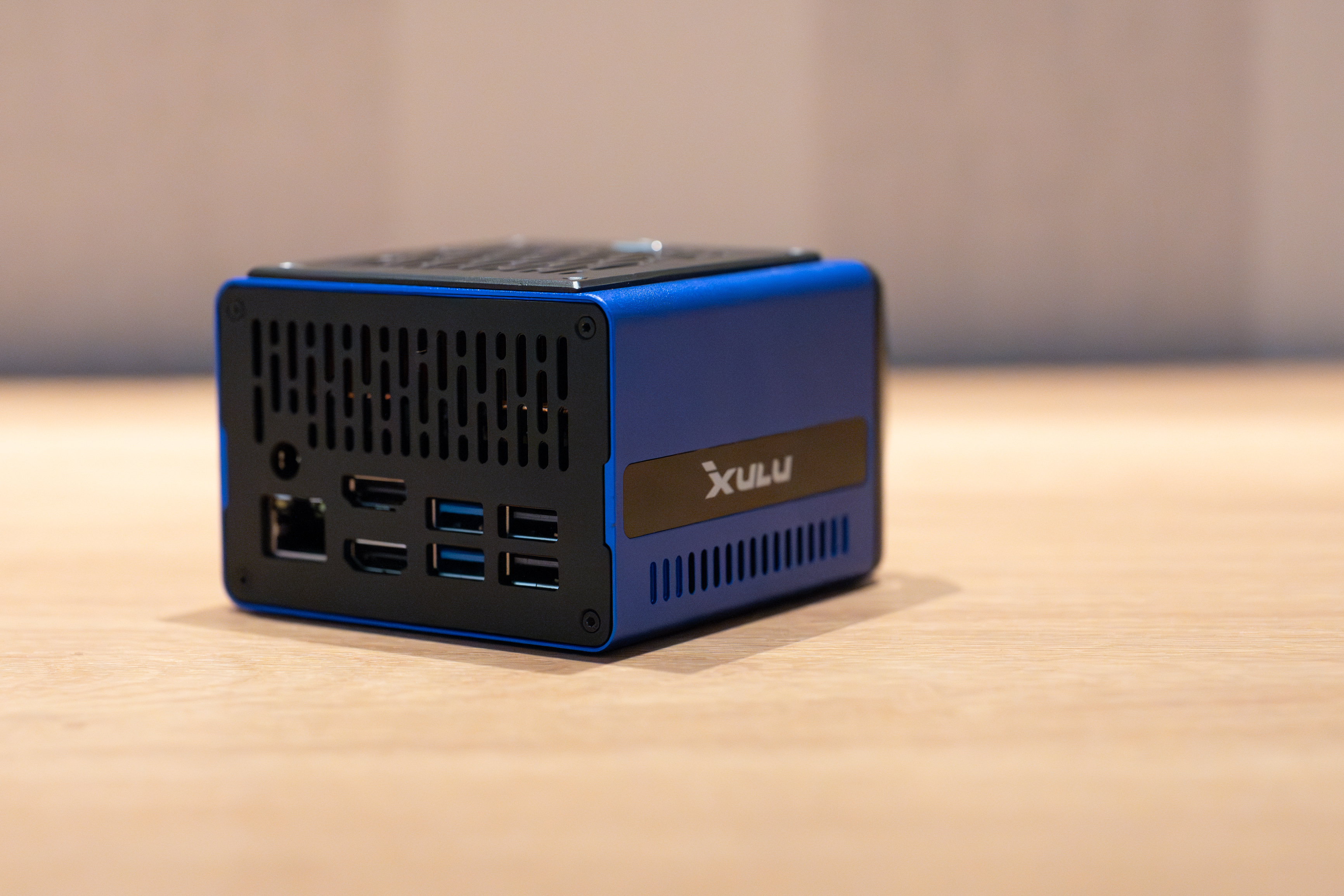
| Cinebench R23: | Multi-core: 6,302; Single-core: 1,296 |
| Geekbench 6: | CPU multi-core: 6,604; CPU single-core: 1,728; GPU: 14,040 |
| PCMark 10: | 4,970 |
| Handbrake: | 8m 47s |
The Ryzen 7 inside the XR1 Max is an APU, which is AMD’s designation for a chip that combines CPU and GPU cores. This means there's no discrete GPU, which may dishearten anyone wanting to use it for gaming, but there's not nearly enough space in the casing anyway.
What you get is something that performs exactly the way you’d expect a modern laptop chip to. Its benchmarks put it below the Ryzen Z1 Extreme in the ROG Ally portable gaming deck, as well as the Ryzen 7 6800U in the creative-focused Acer Swift Edge 16, the Core i7-1260p in the Huawei Matebook X Pro, and the vanilla Apple M2 in the MacBook Air, but it is streets ahead of the Steam Deck. It’s about as good as a 10th-gen Intel i5 desktop chip from 2020, which isn’t a criticism at all given that this is running in a much tighter space and with a lower power draw.
When it comes to creative software, the ability to output at 4K is always good to have, beating many laptops’ built-in displays. The XR1 Max flies through image-editing tasks, with enough GPU power to accelerate things like Liquify in Photoshop. It can deal with video files too, but a computer with a separate GPU will always have the edge when it comes to exporting. The 5800U can do it, certainly, just not as fast as a more specialised setup.
Gaming at 1080p is certainly within the XR1’s capabilities, though you’ll get better performance if you stick to titles from a few years ago, or turn the graphics settings down to low. In day-to-day use under Windows 11 (you can install any OS you like on it, so various flavours of Linux are definite possibilities) it zips along. Startup is particularly fast, with the NVMe SSD showing its worth. The RAM used is slightly disappointing, being dual-channel LPDDR4 with a CAS latency of 22 clocks, but this is fairly standard for laptop chips, and at least you get plenty of it in the Max model - cheaper versions with lower specs are also available.
The cooling system inside the PC contains a fan and some heatpipes alongside a copper heat sink, and vents out of the top and rear of the unit. The fan is always running while it’s switched on, which makes a noise, but it’s soft and not extremely noticeable, especially when it’s working less hard. We connected it to two screens using the HDMI ports on the back, and had no trouble getting it up and running immediately.
Should I buy the Xulu XR1 Max?
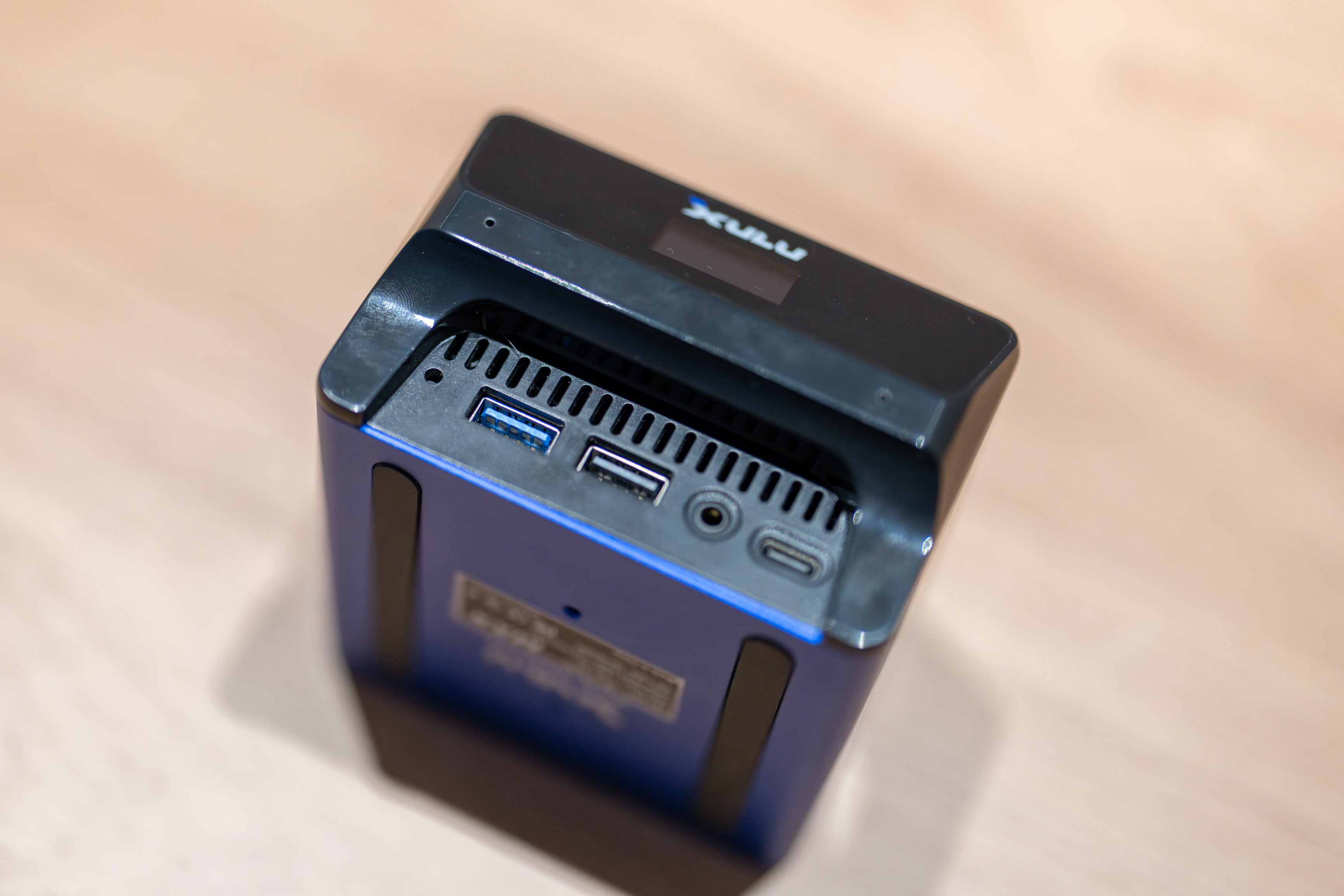
The Kickstarter campaign that launched this tiny PC into the world raised fourteen times its goal, so there's definitely a market out there for this kind of small form-factor PC. The price on the Kickstarter page is pretty reasonable too, with the Max model we’ve reviewed going for around £568 in earlybird before you factor in things like import duty and VAT. A note on the site says it will retail for $1,199, or about £930 + tax.
That puts it strongly in Mac mini territory. Apple’s smallest desktop has a reputation for going like the clappers, but you can’t spec it with 32GB of RAM without stepping up to the M2 Pro, and that model, with a 1TB SSD, costs nearly £2,000. Even the base model, with 24GB of RAM and a 1TB drive, costs £1,450. You’ll get more performance from Apple’s machine, though.
To get something this small with this level of performance for this price is quite something. Space, sound, and power consumption are all things that the modern office has to think about, especially as so many of us are working from our spare bedrooms. Having something the size of a Bluetooth speaker that can replace a whole tower is going to be attractive to a lot of people.
out of 10
The Xulu XR1 Max is a Kickstartered mini PC that offers a very reasonable power level in a teeny-tiny case. What it lacks in expandability it makes up for in capability, with the AMD APU good enough for image or video editing. What’s more, you can take it apart to upgrade the RAM and storage should the need arise. It’s a good all-in-one package, an all-rounder that will fly through office tasks, can turn its hand to serious creative work, and even manage a bit of light gaming.

Ian Evenden has been a journalist for over 20 years, starting in the days of QuarkXpress 4 and Photoshop 5. He now mainly works in Creative Cloud and Google Docs, but can always find a use for a powerful laptop or two. When not sweating over page layout or photo editing, you can find him peering at the stars or growing vegetables.
